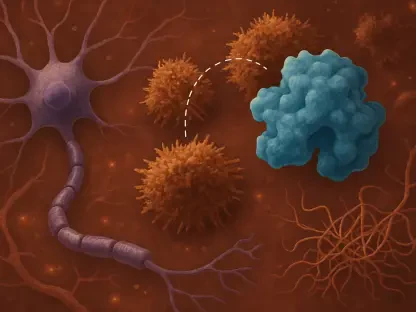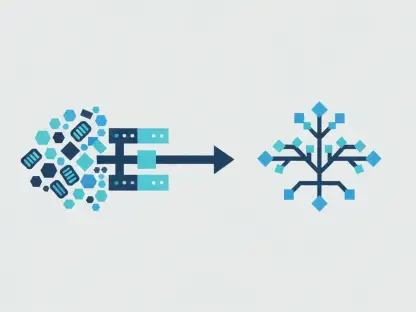The findings from the late-breaking research presented at the 66th American Society of Hematology (ASH) Annual Meeting and Exposition have brought new insights into the treatment of mantle cell lymphoma (MCL). The phase 3 study EA4151, conducted by the ECOG-ACRIN Cancer Research Group, investigated the efficacy of high-dose chemotherapy followed by autologous stem cell transplant (ASCT) in patients with MCL who are in remission following their initial treatment. The study, titled “Rituximab With or Without Stem Cell Transplant in Treating Patients With Minimal Residual Disease-Negative Mantle Cell Lymphoma in First Complete Remission,” aimed to determine whether ASCT provided any additional benefit over rituximab alone for these patients.
Key Findings from the Study
No Significant Benefit in Overall Survival
The primary finding from the study is that high-dose chemotherapy followed by ASCT does not provide a significant benefit in terms of overall survival (OS) for patients with MCL who are in remission after their initial treatment. The trial was stopped early following a planned interim analysis which showed no significant difference in OS between the two groups. Specifically, the 3-year OS rates were 82.1% for the group receiving ASCT plus rituximab versus 82.7% for the group receiving rituximab alone. This result highlights a shift in understanding the treatment for MCL, especially within the context of modern, highly effective induction and maintenance therapies.
The study points out the potential to safely avoid the risks associated with ASCT for patients who are already in deep remission with undetectable minimal residual disease (MRD) following initial treatment. These findings suggest that consolidative ASCT may not be necessary for such patients, shifting the treatment paradigm and potentially sparing patients from the side effects and complications of an aggressive procedure. Instead, the effectiveness of rituximab alone appears sufficient for maintaining remission in these individuals, questioning the necessity of ASCT in similar clinical scenarios.
Treatment Approaches
The interim analysis suggests that consolidative ASCT may not be necessary for patients in first complete remission with undetectable MRD. This finding is significant as it indicates that patients can potentially avoid the intensive and risky ASCT procedures if they are already in deep remission post-induction therapy. The study emphasizes the efficacy of modern treatments and the pivotal role of MRD testing in guiding therapeutic decisions. This approach mitigates the burden of chemotherapy and ASCT on patients, improving their quality of life by reducing exposure to the associated risks and long-term effects of intensive treatments.
Additionally, the trial reflects modern trends in oncology that favor less invasive therapeutic strategies when effective, emphasizing personalized treatment plans based on individual patient profiles and disease characteristics. Employing MRD testing to guide treatment decisions aligns with these trends, highlighting the increasing importance of tailored medicine in managing malignancies like MCL. Rather than defaulting to aggressive treatments, oncologists can now utilize precise diagnostic tools to deliver treatments that offer an optimal balance between efficacy and tolerability.
Overarching Trends in MCL Treatment
Advancements in Induction and Maintenance Therapies
One overarching trend identified in the study is the effectiveness of modern induction and maintenance therapies, which have significantly improved outcomes for patients with MCL. The advancement of targeted therapies and immunotherapies, such as rituximab, has contributed to these improved outcomes. Historically, MCL was associated with poor prognoses, but recent developments have extended the first remission to 8 to 10 years or longer for many patients. Rituximab has played a pivotal role in these advancements, serving as a cornerstone of therapy and demonstrating significant efficacy, both when used alone and in combination with other agents.
Recent progress in understanding the biology of MCL has led to the development of novel agents that target specific pathways involved in the disease. This includes Bruton’s tyrosine kinase (BTK) inhibitors and BCL-2 inhibitors, which have shown promise in clinical trials. The incorporation of such targeted therapies into induction and maintenance regimens has the potential to further transform MCL management, potentially leading to even longer remissions and improved survival rates. The advancements underscore the dynamic nature of MCL treatment, driven by ongoing research and innovation that continually refines and improves therapeutic strategies.
Importance of MRD Testing
The study underscores the importance of MRD testing in guiding treatment decisions. The clonoSEQ® MRD test, used in this study, is a highly sensitive assay that can detect traces of lymphoma that standard imaging and blood tests might miss. The results indicate that patients in first complete remission with undetectable MRD do not benefit from additional aggressive treatments like ASCT. Utilizing such sensitive assays enables oncologists to more precisely monitor disease status, ensuring that treatments are appropriately calibrated to the patient’s actual burden of disease, rather than relying solely on less specific indicators.
MRD testing is part of a broader trend towards precision medicine, where treatments are tailored based on specific biomarkers and patient characteristics. This aligns with the goals of enhancing treatment efficacy while minimizing unnecessary toxicity and interventions. In MCL, where maintaining quality of life is a prime consideration alongside extending survival, MRD testing provides a valuable tool in the oncologist’s arsenal. It offers a more nuanced understanding of disease dynamics, guiding decisions that benefit patients through balanced and effective treatment strategies.
Trial Design and Implementation
Study Design and Patient Enrollment
The trial involved patients in the first complete remission after induction therapy. Funded by the US National Institutes of Health’s National Cancer Institute (NCI), and conducted through the ECOG-ACRIN, cancer centers and community hospitals participated in the study, enrolling 650 patients between August 2017 and July 2024. These patients underwent PET/CT imaging, a bone marrow biopsy, and a blood draw. The primary endpoint of the trial was to compare OS between those who received ASCT plus rituximab and those who received rituximab alone.
Such a comprehensive study design ensures robustness and reliability of the findings, as it involves a large and diverse patient population and employs rigorous diagnostic and monitoring techniques. The inclusion of both academic cancer centers and community hospitals facilitates a broad applicability of results, reflecting real-world clinical settings. The design also underscores the collaborative effort required in conducting large-scale clinical trials, integrating resources and expertise across various institutions to advance oncological research and care.
Detailed Results and Analysis
Out of the 650 patients enrolled, 516 achieved complete remission with undetectable MRD post-induction therapy and were randomized into two arms. In Arm A (n=257), patients received ASCT followed by 3 years of rituximab. In Arm B (n=259), patients received 3 years of rituximab alone. The OS was similar across both groups: 82.1% in Arm A versus 82.7% in Arm B, with a median follow-up of 2.7 years. These findings highlight that adding ASCT to rituximab does not significantly alter the remission outcomes, reinforcing the efficacy of rituximab therapy by itself in achieving sustained remission.
The secondary endpoint, progression-free survival (PFS), also showed similar 3-year rates across different arms: 76.6% in Arm A, 77.4% in Arm B. For the remaining patients, who were either MRD positive or had partial responses (Arms C and D), the 3-year OS and PFS were comparable to the primary study arms. The data suggests that the benefits of rituximab, without the need for ASCT, extend across various patient subsets, including those with partial responses or detectable MRD. Consequently, these findings support the potential for adjusting treatment protocols to reflect these insights, enhancing patient care while avoiding unnecessary interventions.
Implications for Future Research and Clinical Practice
Reevaluating ASCT in MCL Treatment
Recent findings from the 66th American Society of Hematology (ASH) Annual Meeting and Exposition have provided fresh insights into mantle cell lymphoma (MCL) treatment. The phase 3 trial EA4151, conducted by the ECOG-ACRIN Cancer Research Group, explored the effectiveness of high-dose chemotherapy followed by autologous stem cell transplant (ASCT) in MCL patients who achieved remission after initial therapy. This study, titled “Rituximab With or Without Stem Cell Transplant in Treating Patients With Minimal Residual Disease-Negative Mantle Cell Lymphoma in First Complete Remission,” aimed to determine if ASCT offers additional benefits compared to rituximab alone for these individuals. The objective was to see whether the incorporation of ASCT in patients who have no detectable disease post-remission could further improve outcomes compared to the use of rituximab as a standalone treatment. The trial’s results may potentially influence future standards of care for MCL, offering new therapeutic directions.









